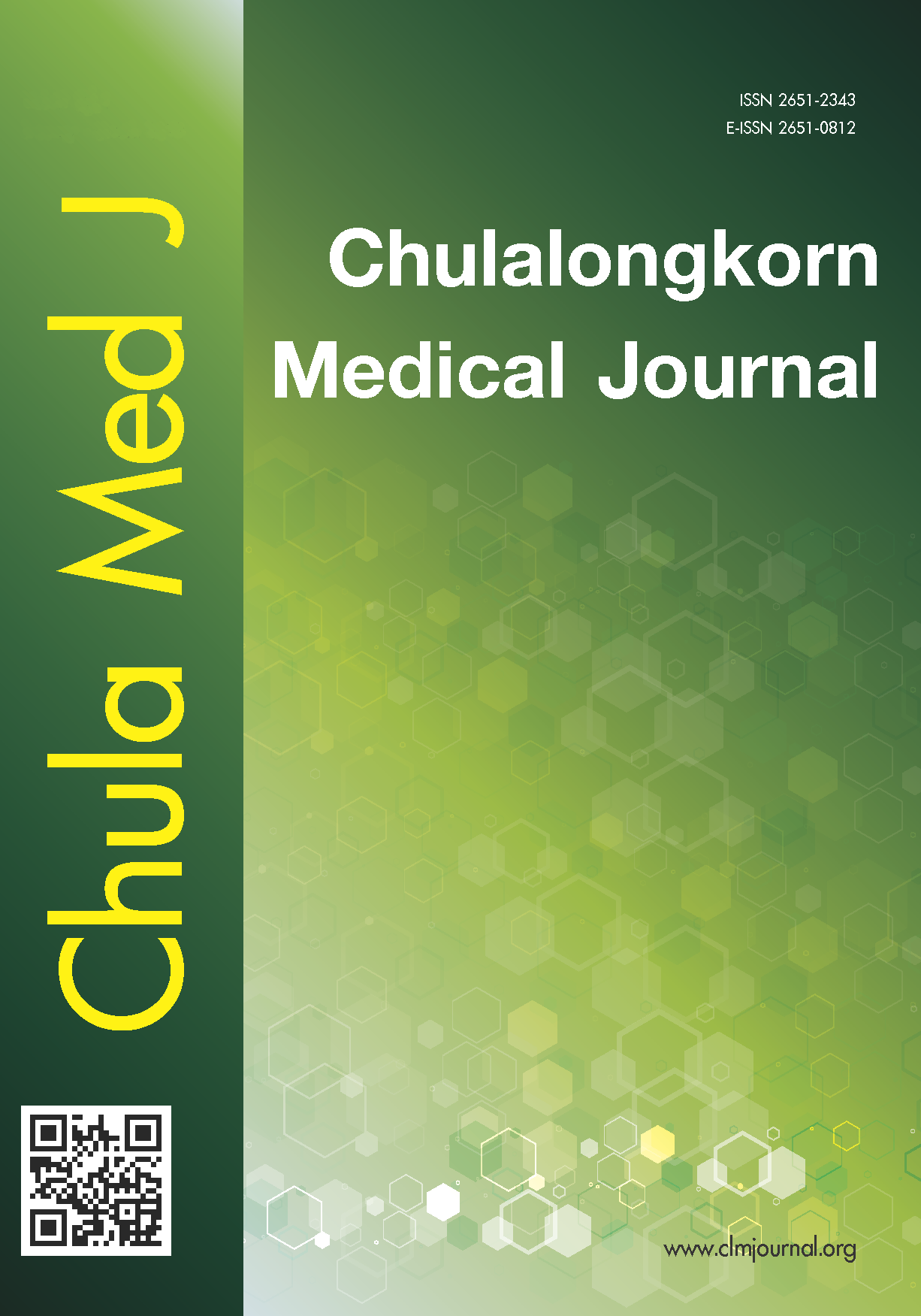Effects of general obesity on heart rate variability in Thai people with physical inactivity
Main Article Content
Abstract
Background: Obesity is an important risk factor of cardiovascular diseases. Heart rate variability (HRV), and
maximum oxygen consumption (VO2max) are parameters of cardiorespiratory function for determining aerobic capacity. However, the studies that investigated the effects of obesity on HRV, pulmonary function and VO2 max in male participants aged 40 and 50 years, have been limited.
Objectives: This study aimed to compare HRV, pulmonary function and VO2max in male participants with normal body mass index (BMI) (18.5 – 22.9 kg/m2, n = 10), and Class I obesity (25 - 29.9 kg/m2, n = 10) and also to use HRV to assess cardiopulmonary function in obese subjects.
Methods: In all, there were twenty healthy subjects, aged 40 - 50 years. Each subject was measured for their
body composition, heart rate variability, pulmonary function and VO2max by cycle ergometer. The data were
compared for significant differences between groups by using unpaired t-tests.
Results: The time domain parameters of HRV in the obese group were lower, low frequency and the ratio of low and high frequency (LF/HF ratio) were also higher when compared with participants with normal BMI. Pulmonary function and maximum oxygen consumption were not significantly different between the groups (P > 0.05).
Conclusion: Autonomic balance was diminished in obese participants. Therefore, the assessment of HRV may
be applied as a basic screening test before development of cardiovascular diseases.
